Table of Contents
The fast-paced world of marketing agencies can be a stressful place to work. Time is often of the essence–deadlines must be met, budgets must be adhered to, and marketing materials must be on top of their game. Meeting these milestones requires marketing professionals to remain organized and focused while juggling multiple tasks simultaneously.

We surveyed marketing agencies across the country and around the world to find some of the most ridiculous, off-the-wall requests they had ever received. Here are some of our favorite responses from the ones we gathered.
Read them and weep, laugh, shake your head in bewilderment, or silently commensurate with these agencies. It’s all up to you.
So, grab a coffee–and maybe a donut–and enjoy!
11 Times Agencies Received the Most Unreasonable Client Requests
Things can get complicated when unrealistic clients make unreasonable requests that marketing professionals must contend with. This could include outrageous deadlines, impossible budgets, or requests for things like animation or motion graphics which they should have discussed during initial conversations about services offered by the agency.
Let’s take a look at some real-life examples of crazy client requests–and how agencies responded.
1. A Target Audience of One
Sometimes, clients have very specific requests that have nothing to do with improving campaign performance.
James Robinson, Managing Partner at Hello Starling in the UK, shares his experience of a particular client with a very peculiar request to “buy a billboard on the road that the Chief Executive's wife lives on.”
Although the team tried to convince the client that “the CEO's wife is not the target audience,” they said to book it anyway, so the agency did.
Why was placing the ad somewhere the CEO’s wife would see so important to the campaign? Your guess is as good as ours. But, sometimes, you must give in to client requests just to make them happy.

“An agency is often judged for things that the client specifically requests or overrules the agency on,” Robinson explains. “It can cause friction, but it inevitably makes a campaign less effective, which isn't great for the client or the agency.”
How would Robinson recommend handling these requests, even though they eventually did what the client asked?
Push back. Give your rationale. Make sure it's documented, and if you do have to do something crazy, make sure you caveat doing so with your client so that you're covering your back.
After all, you can’t spell crazy without CYA.
2. When Their Eyes Are Bigger Than Their Budget
There’s an old saying about having champagne taste on a beer budget, but what does an agency do when that applies to a client request?
Tony Gnau, the Founder & Chief Storytelling Officer of T60 Productions knows exactly how that feels. Here is the story he shared with us.
“We're a video production company, and we occasionally receive video requests with unrealistic budgets. One time, a prospect asked for a cost estimate and sent along a link to an example video from a big brand.” Of course, that example came along with the very simple request of "We want something just like this!"
According to Gnau, the video they provided as an example had a very high production value, filled with drone shots, time lapses, and more–all indicating that it had clearly taken several days just to film.
Based on the level of work that would be required to create something “just like this” their team estimated around $30,000 for the project.
And how did the client respond to their estimate?
“We got a note back from them saying their budget was $3000.”

Sound all too familiar?
But Gnau warns that sticking to your guns is important when you’ve quoted reasonable costs for reasonable work.
You don't want to be the person who always says, ‘No,’ but at the end of the day you have to figure out how to do it with empathy.
So he did what any reasonable agency owner would do: “I suggested scaling back the project. We never heard back from them.”
But that’s ok, according to Gnau. “If someone is always difficult, or crazy, then fire them as client. They're not worth the stress. There's another client waiting to be found around corner.”
3. Swipe Left
It can be challenging when a client request is so far out in the left field that you’re stuck, scratching your head. That was likely the case when Laurie Heard, President of Move Digital Group, was asked a very important question by a client.
Why aren't we on Tinder? I've been hearing a lot about that site, and it seems we should be on there.
This could be mistaken for a simple lack of understanding of the digital landscape. After all, if you’ve never swiped left or right, you may not know that Tinder is not necessarily the right place for a brand.
But this particular case seemed to be indicative of a larger issue.
“One of our financial service clients had an excellent marketing team, but the exec team and board clearly didn't understand marketing and kept redirecting them, so they couldn't get good traction,” Heard details. “When exec teams and boards ‘seagull manage,’ there is only so much education possible.”

And what did Heard do with this difficult client? In the end, they had no choice but to Swipe Left. Although they didn’t downright fire the client, they let the relationship fizzle out–as most Tinder relationships do.
“It took a few more months, but the relationship ended. Their marketing team was so frustrated–I still feel bad for them.”
However, Heard doesn’t blame all unreasonable requests on the client. She often finds that “difficult client requests are caused because we have mismanaged the relationship or set bad expectations.” She adds that the biggest challenge in these situations is “realigning and rebuilding.”
4. Wait, and Hurry Up
Calum Maxwell, Managing Director for the Australian marketing agency Optimise Online, talks about a time when the client had them waiting for nearly two years to start a project, then gave them an unrealistic deadline for delivery.
"A client asked if we can have their website finished in five weeks," Maxwell explains. "We have been waiting on approval of the initial brand design for two years, and we still haven't received the completed copy from them."
Because they hadn't received the necessary materials, the project had not been kicked off, including wireframes or website design elements. They hadn't even received approvals on the initial branding. There was no chance of having this website finished within five weeks.
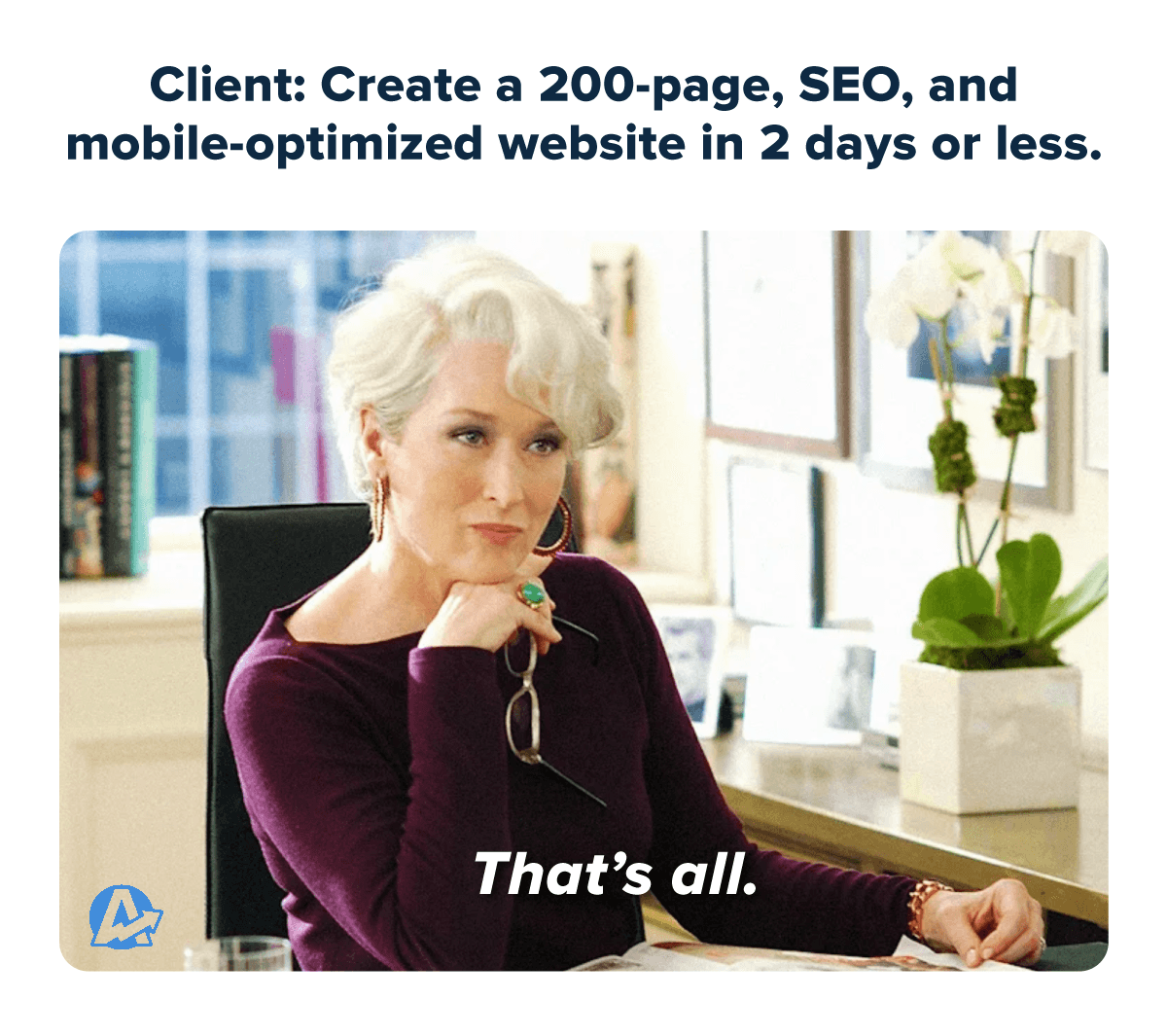
How did they deal with that situation, you might ask?
They "softly explained the hard truth of the matter whilst reassuring that we are excited to revisit and get underway with his project, to move towards completion," Maxwell outlined.
When a tricky client expects you to work within their schedule without being mindful of the process, there can be tension. The key is to stick to your guns and explain it simply because if you try to bend to their expectations, it will cost you time away from your existing client projects, and will cause undue stress on your team.
His final piece of advice when dealing with difficult clients is this: "Communication is key, be patient, and explain simply. Stick to your processes, and refer back to the scope of works and terms of service if need be."
5. Jesus, Take the Client
Sometimes, the crazy happens even before they are–technically–clients. Jens Rhoades, CEO of Floodlight SEO, discussed a time when a client canceled their recently-signed contract with a very odd, after-the-fact sales objection.
“I was driving away from the sales meeting with a signed agreement and check in hand. Halfway back to my office, I got a call from a weeping new client,” Rhoades shares.
She said that Jesus told her this was a mistake and that she wanted to back out.
So, how did Rhoades end up handling this spiritual revelation?
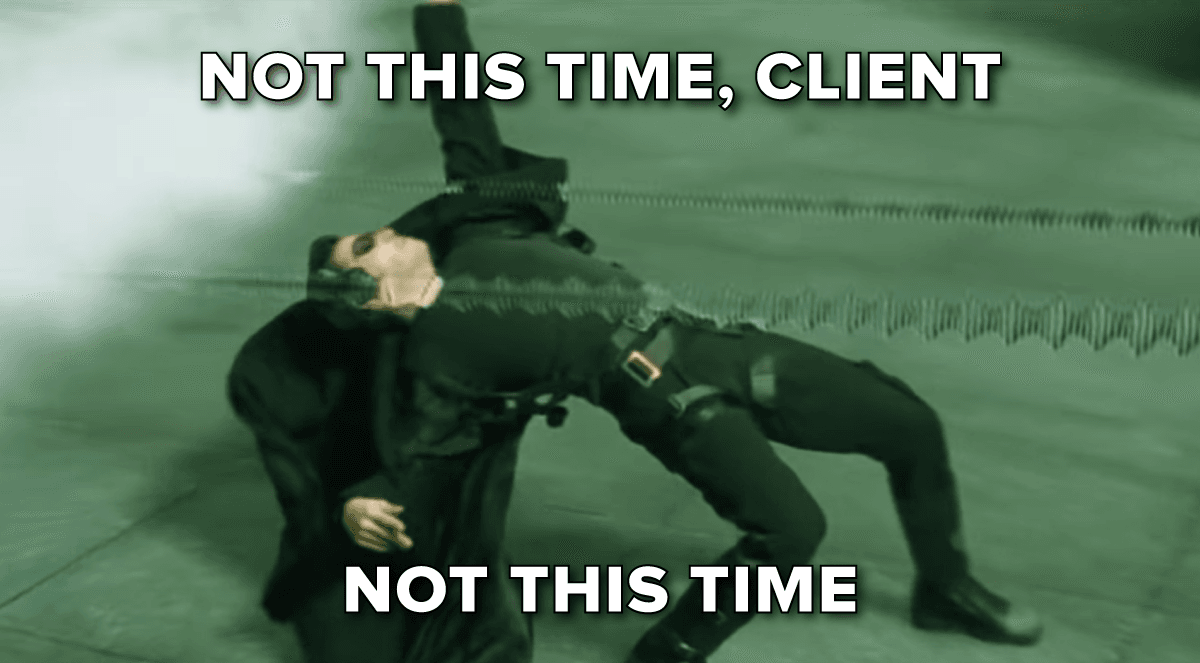
“I considered telling her… ‘That's strange... he just told me it was a fantastic idea,’ but instead opted for just tearing up the check and wishing her luck and happiness in the future. Bullet dodged? I think so.”
6. Time Is NOT on Your Side
There is this very odd concept inside a marketing agency that some clients don’t fully comprehend. That strange and mysterious thing is called a “Weekend.” In case you’ve never heard of it yourself, a “Weekend” is that period between Friday evening and Monday morning when normal people rest, relax and spend time with people they call “Family and Friends.”
As Nick Farnborough, the Founder of Canadian marketing agency Clavis, shares, the Bermuda Triangle of time can be a foreign concept to some clients.
“We were working on a multi-channel digital strategy project that normally takes 3-4 weeks to complete. The client sent us a list of requests after business hours on a Friday. Then sent a follow-up email on Monday at 9:12 am asking us 'Where are the changes?' and 'Why haven't you reached out?'”
Between the time they sent the emails, there was a grand total of 12 working minutes. Definitely one of the craziest requests we've received!
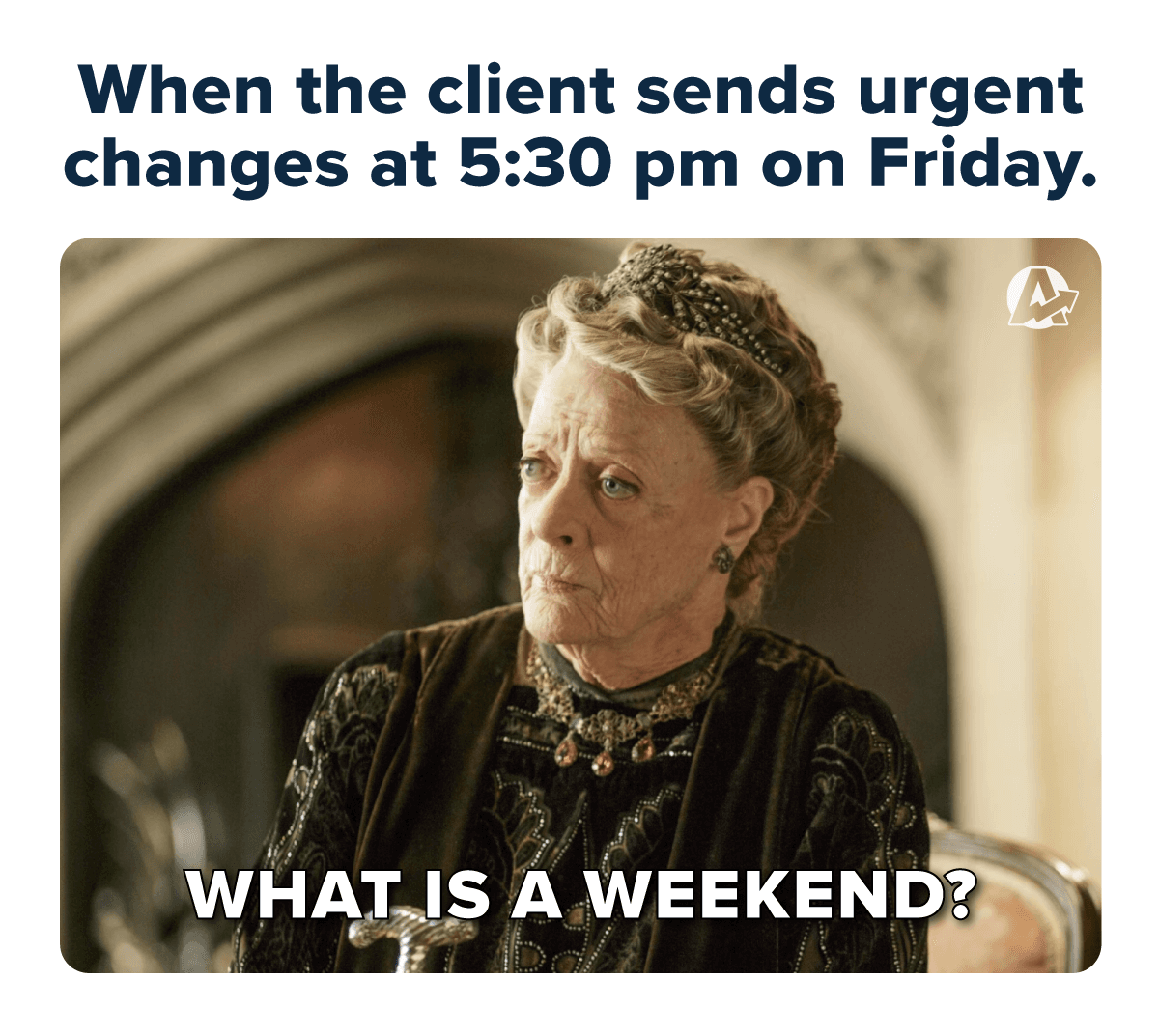
And what did the team at Clavis do on Monday to deal with their impatient client?
“The team spent some time discussing the situation and ultimately decided to respond politely and calmly with our original scope of work and timeline,” Farnborough responded. “The client didn't seem to understand that their request was not normal.”
That’s a bit of a toxic client red flag right there.
But these situations can sometimes be remedied, according to Farnborough.
“Educating clients is often the biggest challenge we face. Their expectations versus the reality of what is possible are often far apart. Clients want something delivered immediately and for it to be perfect. The reality is that great work takes time and care.”
He continued by providing some sage–and timely–advice. “Always stay calm and make sure that you handle the situation with respect. Sometimes it can be difficult to find the best way forward, but if you work through the problem carefully, a good solution can normally be found.”
7. Just a Little TOO Personal
It’s great when an agency can develop a deep, personal relationship with the client. But sometimes that relationship gets just a little bit too personal. That’s what Michael Quinn, the Founder of My Site Ranked discovered.
“I've had to take on the role of therapist for my clients as they unexpectedly confided in me and unloaded about their personal matters–like divorce–and shared uncomfortably intimate details about their lives and marriages.”
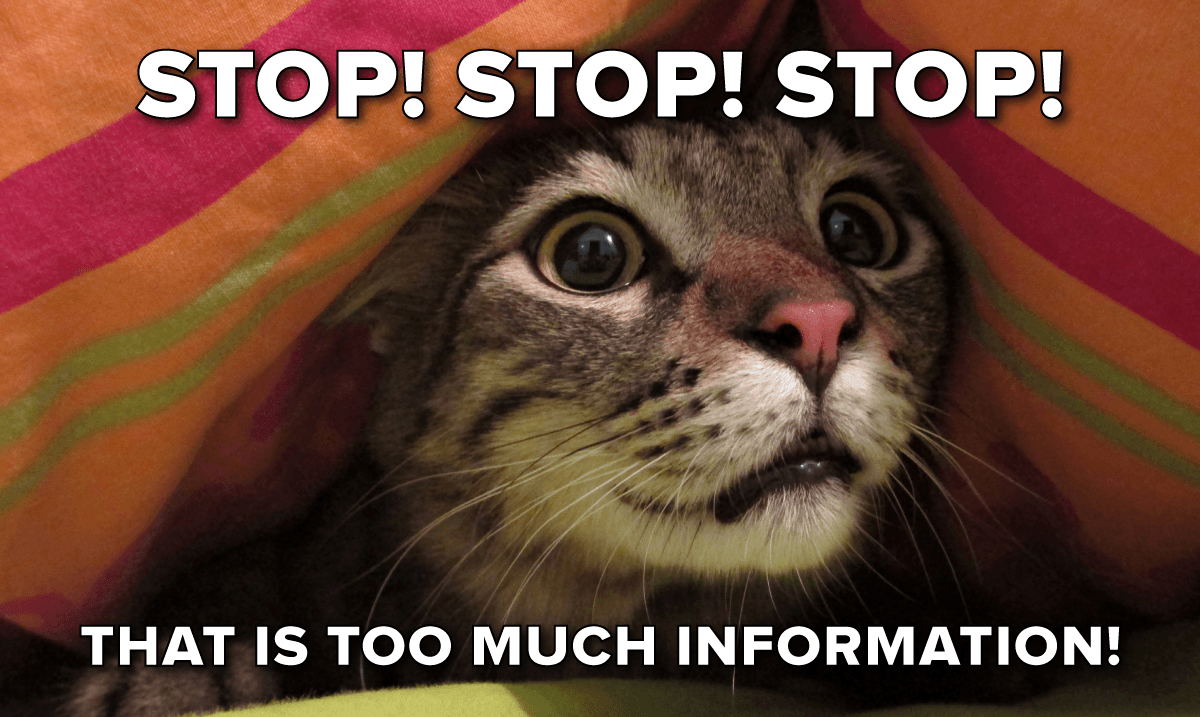
I mean, you can see the client’s side of it. A full-service marketing agency should include marriage counseling in the package, right?
But Quinn was a real trooper when this happened at his agency–twice!
Each time, I politely listened and gave counsel whenever possible. While this was definitely awkward for me (and potentially unprofessional), I was grateful that they felt secure enough with me to do so, especially during difficult times.
Quinn shared the key lessons he learned dealing with these and other challenging client situations.
“No matter how crazy client requests may seem, always remember to maintain professionalism. You never know what kind of situation your clients may be in, so handle them with grace and poise. But keep in mind that respect goes both ways. If a client turns out to be too difficult or simply incompatible with your team's culture or values, it is perfectly acceptable to part ways”.
8. Because Size Does Matter
Anyone who works in graphic design can empathize with this next, all-too-common request.
Can we make it bigger?
Yes, we live in a world where everything is Super Sized, but when it comes to marketing–bigger isn’t always better.
But, as Josh Kimmes, Owner of Bear North Digital, describes, every agency will eventually fall victim to the size trap. Eventually.
“I had somewhat avoided the "make the logo bigger” dilemma that so many peers have complained about over the years,” Kimmes told us. “On one of the biggest projects I had ever worked on, the owner chimed in and said, "make the logo HUGE, so people see our brand."
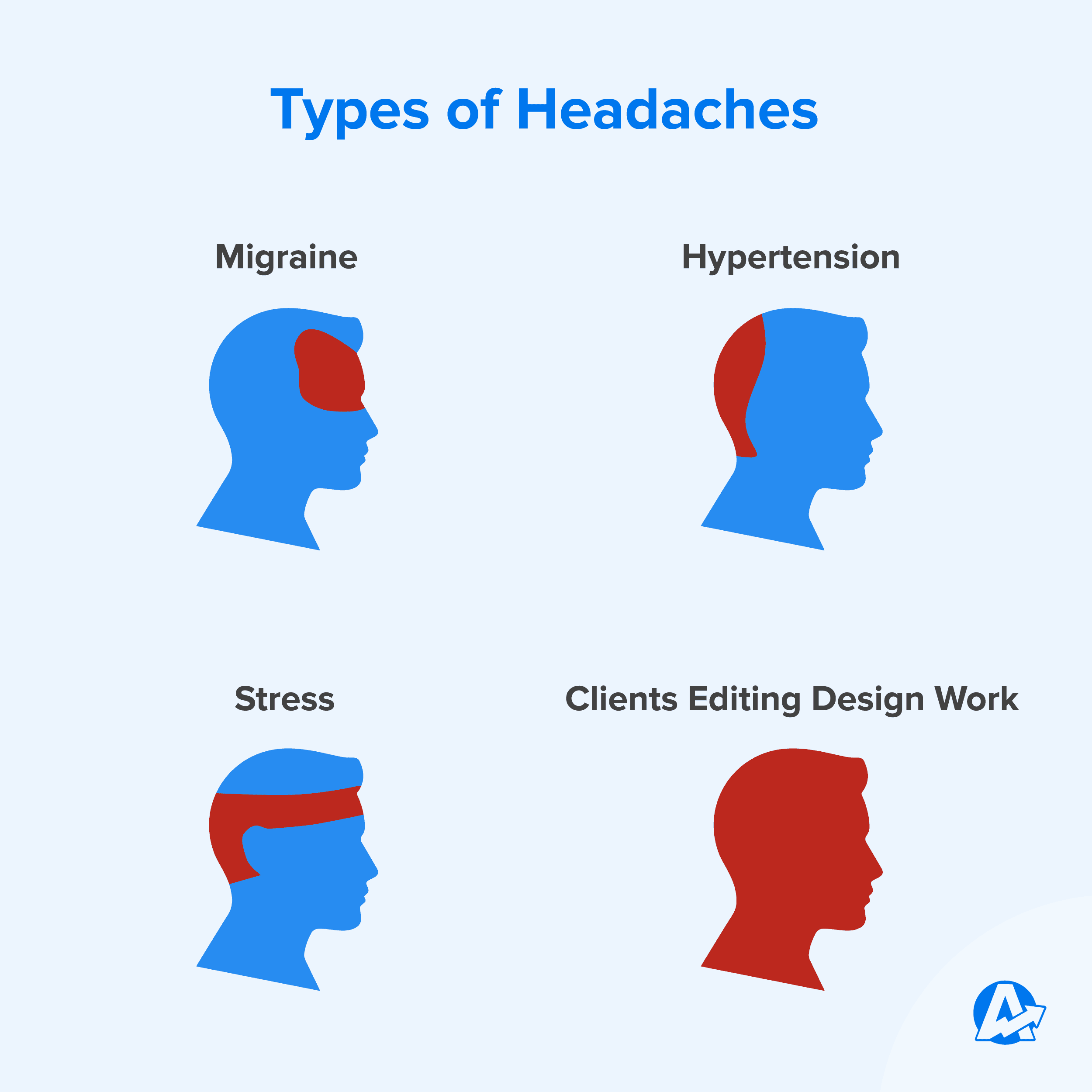
Sometimes, however, logic does prevail. Kimmes sat down with the client and explained the process of engaging with a website and that the logo being as huge as he wanted, would have been distracting.
His biggest piece of advice when dealing with difficult clients is to “check your feelings at the door and do what's best for the business.”
“We ultimately did some UserTesting on this project, so we had some additional insight on the logo and the design of the site as well.”
“You want to make everyone happy,” Kimmes continued. “I got into this business because I love helping clients grow their businesses. Sometimes those things conflict with each other.” He also suggested looking beyond the surface of the request so that you can “get to the root of where the request is coming from.”
Sometimes, “make the logo bigger” means “it’s really important for our brand to be recognizable.”
And sometimes, it means they simply want the CEO’s wife to be able to see it, right James Robinson?
9. Just Google It
Patience seems to be a common struggle with agency clients, as Doug Walker, the CEO of iOutrank discovered.
“The VP of a company–for whom we were providing SEO services–requested a new page on a particular topic and wanted it to rank at the top of Google.”
Ok, that doesn’t sound crazy so far. But wait for it…
“We created the page, applied SEO optimization best practices, published it, and put it in our task lineup for promotion and link building. The next day he called upset that he couldn't find the page at the top of Google and was wondering what the problem was.”

You can almost imagine the look of surprise, followed by the extremely loud laughter, plus a little bit of rolling on the floor.
And how did Walker handle the situation; once he and his colleagues had picked themselves back up off the floor?
“We gently explained to the VP that new content can take several months or longer to rank for the targeted search terms.” He continued by saying it is important to “stay calm and try to explain things in a way that a layperson can understand, but with enough detail so that they understand the difficulty of the request.” (Staying calm seems to be a bit of a theme).
But he did admit to learning a very valuable lesson from this exceptional client request about setting expectations early and often, and that it was important for his team to help clients “understand the nuances of SEO and how long it can take.”
10. You’ve Got Mail
At times, the challenge of managing a digital marketing agency is working with clients who are–shall we say–a little bit stuck in the past, aka technologically challenged.
You wouldn’t think things like an email attachment or Google Drive link would be that much of an issue, but that was exactly the case for Nick Beske, the Founder of PointClick.
In this case, it wasn’t so much the request–as what happened next–that was a little bit on the crazy side. Here’s how the story unfolds.
“A client wanted to update their headshot on a landing page,” Beske begins. After telling the client, "Sure, no problem–send it over, and we'll get it updated." They waited.
The next day, they received an overnight FedEx envelope with an 8x10 print of the new headshot. Ok, a little bit old school and not the ideal scenario for uploading a new headshot onto a website. But the team took it in stride.
“We let the client know a digital image would be preferable because scanning the image would not look as good. The client agreed and said he would send it.” And so, they waited.
The next day, they received another overnight envelope, this time with a USB drive containing the headshot image file.
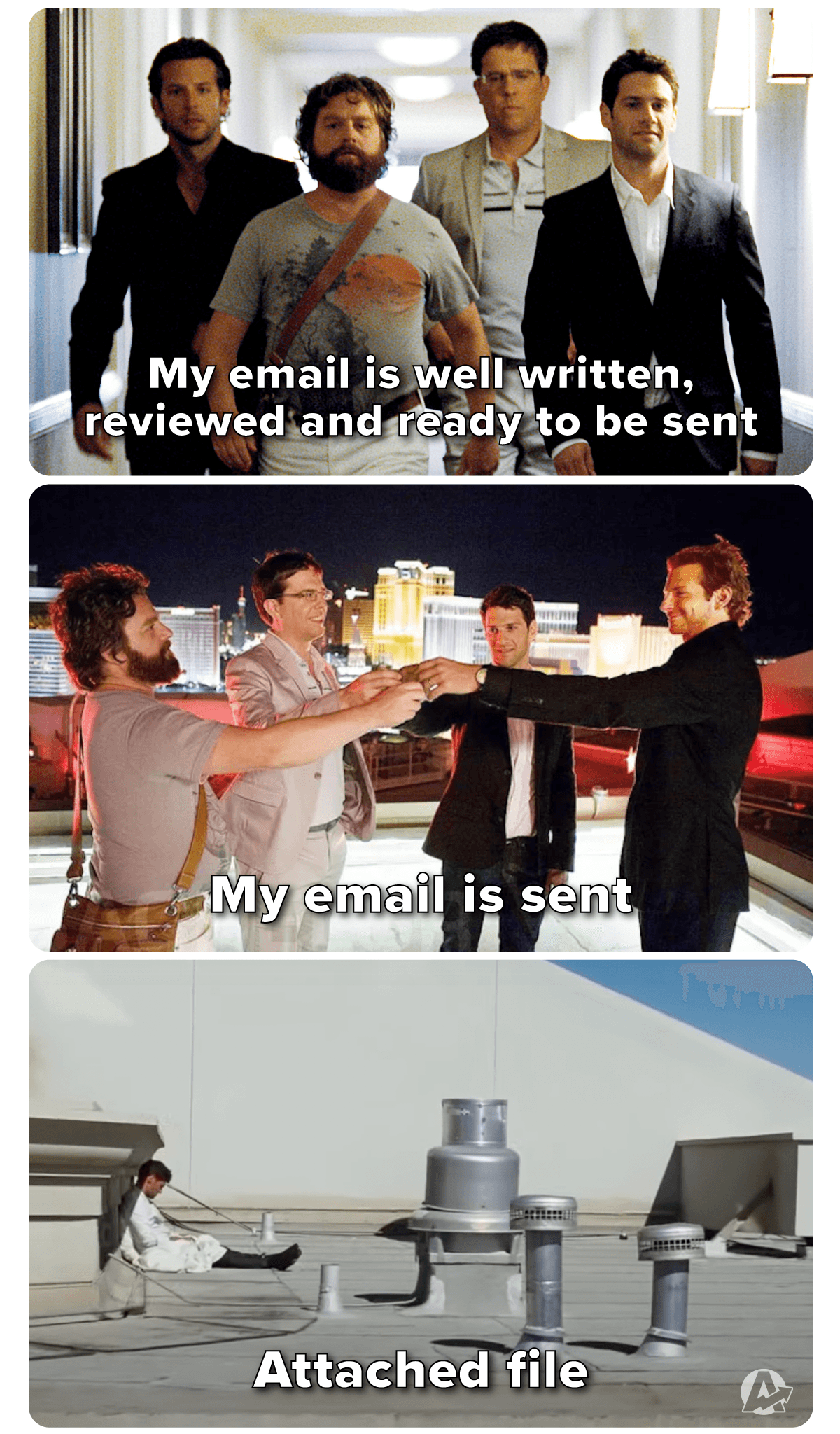
I guess it is better to be safe than sorry; you never know what might happen to an email attachment.
11. Money Makes the World Go Round
I didn’t think it was fair to have all of these marketing agencies bare their crazy client souls without sharing a story of my own, so here goes.
Years ago, I was optimizing PPC campaigns–mostly Google Ads and Bing Ads–with a business that decided “Do More, With Less” was their new motto for the year. This was followed by what they thought was a very simple request.
Increase revenue by 40% while simultaneously reducing the marketing spend by 50%.
When it came to handling the situation, I’d love to say that I followed the advice of the other agencies and remained calm, but the first thing that ran through my head was, “Are you freaking kidding me?”
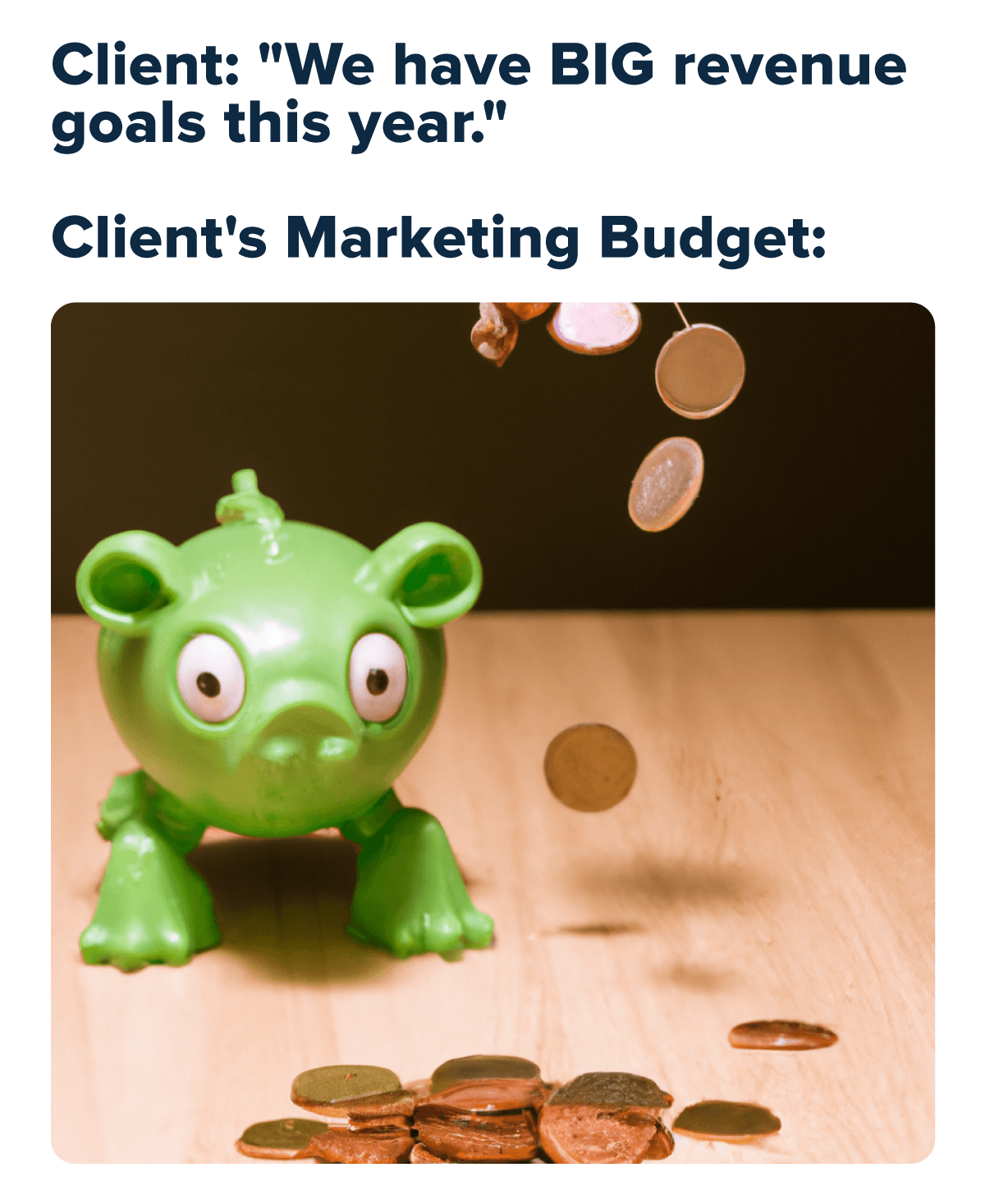
However, I will add that the suggestion to back things up with data was right on the money–pun intended.
We provided an overview of the cost structure showing that:
The Average CPC on both Google and Bing had increased by 8% year-over-year, so we would need to offset that increase to keep pace with what we had done in the past.
Our CPCs, CTRs, Conversion Rates, and ROAS numbers were well within the acceptable ranges outlined in the past.
But one thing I would add that made the difference, in this case, was focusing on the cost of acquisition to lifetime value ratio of new customers and how cutting off that revenue pipeline would eventually mean they were Doing Less with Less.
7 Tips for Dealing with Unreasonable Client Requests at a Marketing Agency
In a marketing world where clients increasingly demand more for less, marketing agencies need to be prepared to stand up for their processes and ensure they don’t get taken advantage of. With these seven tips in mind, marketing pros can feel confident tackling any challenging marketing project head-on.
1. Remain Calm
It’s easy to become frustrated when dealing with a client who is making unreasonable demands, but staying calm and professional can help diffuse the situation and keep emotions in check.
Lisa Cutter from Vertical Insight Marketing even recommends stepping away for a moment. “Go take a breather, calm down, decompress, and don't even continue working for other clients! Your brain needs to switch and focus on something else, even if that something else is Netflix for a while. When you come back, you'll be level-headed and have fresh creative juice to pull from within.”
2. Set Realistic Expectations
Be upfront about what is achievable within their budget or timeframe for any marketing project so that everyone involved knows what to expect. For example, if you call out the deliverables, timeframe, and team availability in an SEO proposal, the client will know when to expect to start seeing results.
3. Stick To Your Processes
If something goes wrong, ask yourself: “Did I follow my normal process?” If yes, stick to it and don’t deviate from the original plan. And make sure to include a focused and regular client reporting process in that mix to keep the client informed about how their campaigns are progressing.
4. Communicate Clearly
Make sure both you and the client are on the same page regarding expectations, deadlines, and deliverables from the very beginning of any marketing project. Nick Beske from PointClick recommends that agencies remain “Polite but firm. Many clients respect a little push-back, and at the end of the day, they are hiring us for our experience and expertise.”
5. Back It Up With Data
If the client requests something outside of the strategy that the agency has created, have data or research to back up why it isn’t feasible or recommended. For example, if they want to be on Page One of Google’s Organic SERPs within two weeks, show them a current snapshot of their keyword rankings, competitive analysis, and a site health checkup report to show why that isn’t possible.
6. Be Transparent
Be honest and straightforward with clients, whether it is good news or bad news. They are more likely to respect you for being candid rather than making up excuses. For example, use annotations and goals in your reporting to highlight the improvements or roadblocks in each reporting cycle.
7. Keep a Positive Attitude
Despite the occasional unreasonable client request, marketing professionals can benefit from approaching every project as an opportunity to learn something new or hone their existing skillset. Keeping a positive attitude will go a long way in helping marketing pros stay focused and productive on any task they take on. And know that you are not alone. As Kirsten Theofanous from Attic Rush shares, “The request might not be as unique as you think (all clients have the propensity to be crazy).”
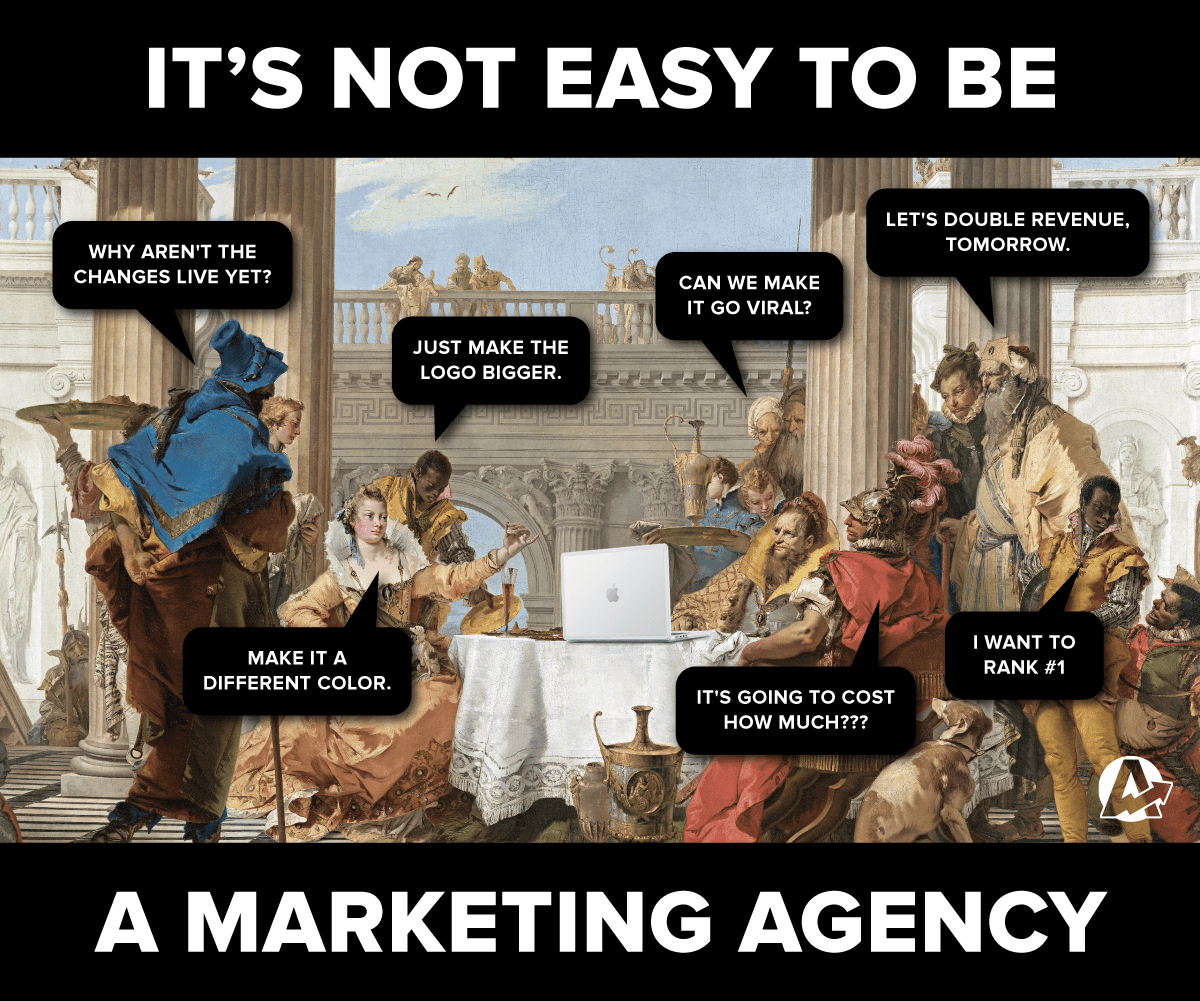
The pressure of satisfying a client’s demands may become overwhelming, but proper communication is key to reaching a solution that works for everyone involved. Even if you know the requests are unrealistic, addressing them properly and professionally is important.
By properly communicating with clients, setting realistic expectations at the start of any marketing project, and maintaining a positive outlook throughout their marketing ventures, marketing professionals can handle even the craziest of client requests.
Ok, maybe not all of them–nobody is perfect. But you can get through a majority of them with grace.
Want some more laughs? Checkout out our recent post on the best and funniest marketing memes!

Written by
Paul Stainton is a digital marketing leader with extensive experience creating brand value through digital transformation, eCommerce strategies, brand strategy, and go-to-market execution.
Read more posts by Paul StaintonSee how 7,000+ marketing agencies help clients win
Free 14-day trial. No credit card required.




